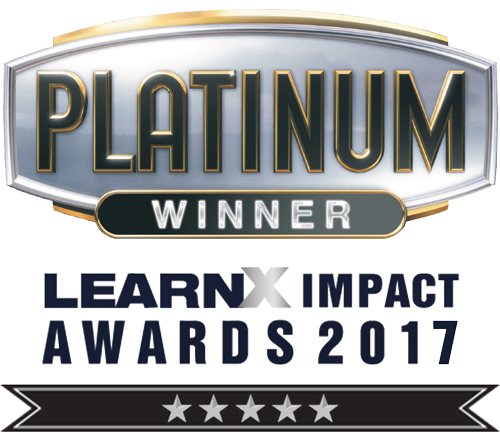When it comes to online learning environments, there’s the perception that forming connections and getting students engaged with the course content and their peers is incredibly difficult or impossible without an in-person component. However, the popularity and use of social media platforms demonstrate how online environments can be effective in drawing people in, networking, and sharing ideas and information. Regardless of whether you are presenting face-to-face or through Canvas, the key is communication. Video presentations (e.g., TedTalks, Linkedin tutorials, etc.), podcast series, or commentary and articles with the widest reach tell stories that are easy to follow, using plain English that make them accessible to a large audience and convey why their topic is important and relevant to the viewer/listener. Having a strong narrative for your course topics with clear instructions of what to do and how it will apply to future assessment or workplace success, will give reason and motivation to your students. Unlike face-to-face classrooms where teachers can get a sense of whether their students are interested, bored, or confused by looking around the room and making immediate adjustments to their delivery, this is much more difficult to do in an online setting. Having multiple points for students to engage and discuss the content can address this issue. Ask students questions during an online session, break them up into smaller groups to talk about what is being covered, have learning activities for them to practice […]
Turning the Kaleidoscope – A model for online learning
At RMIT’s Vocational School of Design and Social Context Learning and Teaching conference Turning the kaleidoscope Andrew Newhouse and Oliver Lorraine-Wedd presented a model for online learning. While there is no one size fits all approach to learning and teaching, there are best practices and standards that should be put in place. How to do you create a model for online learning? By using the VE quality confirmation (QC) framework. The quality confirmation frame work covers these seven pillars: Instruction Clear instructions and guidance are provided to support students in navigating the course and requirements to complete learning activities and assessments successfully. Content Lectures or equivalent content is available for each topic/module/week (recorded lecture, narrated pptx, topic notes). Recommended tools include Echo 360, Collaborate Ultra, Studio, Microsoft Teams and PowerPoint with audio over slides. Readings and resources Course readings and resources are available in Canvas. Relevant resources are available to students to support the completion of required learning activities and assessments. Learning activities Students have sufficient opportunities to apply knowledge and skills in preparation for assessment. Collaboration Students can communicate and engage with staff and other students through the use of discussion boards and other tools. Teacher-to-student support Students should understand who to contact […]
Turning the Kaleidoscope – Online with Impact
Last week saw the VE Design Team present a variety of sessions at RMIT’s Internal Vocational School of Design and Social Context Learning and Teaching conference Turning the Kaleidoscope which explored the notion of flexible and applied ways of learning in Vocational Education. Our presentation ‘Online with impact’ showcased an approach to developing a course from scratch using templates already available within the institution. A straw poll at the start of the session indicated only 30% of participants had used Canvas Commons, a template and content repository for sharing and distributing content within the Canvas Ecosystem. A helpful insight, this showed there was a need to connect VE staff with a system that contains prebuilt resources that will save them time in developing learning experiences. Online with impact, the prefilled course showcasing a variety of interactive digital experiences available to RMIT Canvas authors The workshop stepped through searching and downloading a prepopulated course from Canvas Commons – one which contained a collection of examples and types of content backed up with a pedagogical or engagement focus. Co-presenter Rebecca Summits, Senior Learning Designer, explained course and content structures that would enhance the student experience and how a scaffolded approach to course design supports effective learning. The workshop concluded with best practice examples of different integrations of content to […]
How to deliver learning materials and learning activities flexibly
Last week we started offering support sessions to teachers in preparation for Semester 2 Course Uplift, providing tips, examples, a template, how-to videos, and drop-in question-and-answers sessions, with a focus on structuring course content in Canvas. The sessions continue this week, highlighting set-up, presentation, and student guidance for course learning materials and learning activities. Since lockdown and the shift to remote delivery, Canvas has featured more prominently in the student journey in many programs and courses. For some, this has involved a shift in understanding how Canvas can be used and the versatility afforded when teaching and learning in an online environment. Diversification of learning materials Learning materials encompass everything from in-class lectures to essential and supplementary resources. In many cases where face-to-face lectures, labs, and tutorials were the main source of content delivery, Canvas was used as a repository for storing PowerPoint slides, handouts, and worksheets for activities and assessments. It was expected that students would attend classes to receive instructions on when to use the learning materials listed. Since flexible delivery, teachers have come to recognise how Canvas can broaden the type of learning materials they use and reference, all housed in one location and easy to share with their colleagues and students. Not limited to PowerPoint slides, PDF or Word documents, teachers can embed audio/video files and post links to websites, podcast series, books and articles, micro-credentials, and extensive library resources. Lectures, labs and tutorial demonstrations can be recorded, and narration added to slide presentations for […]


